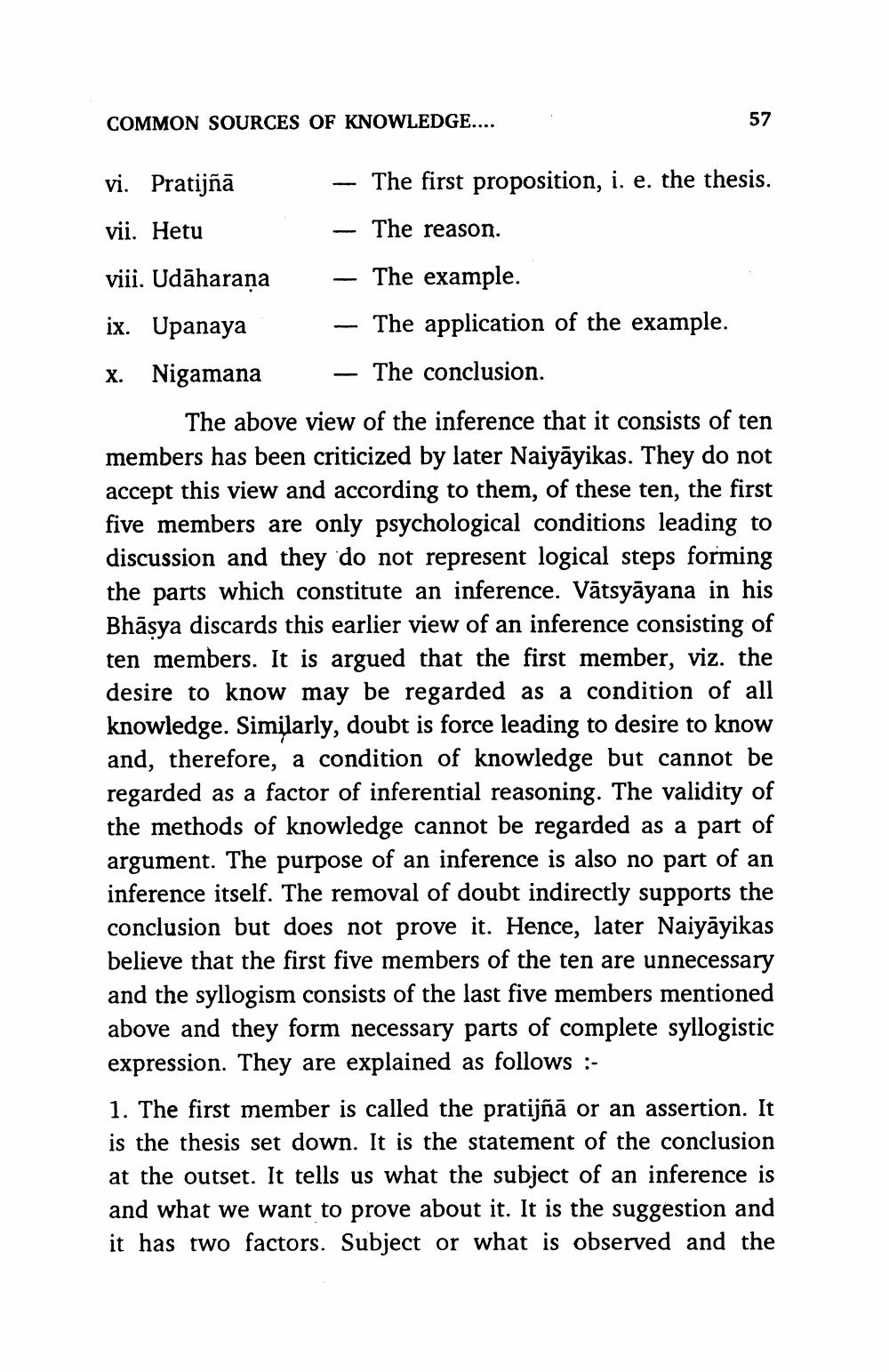________________
COMMON SOURCES OF KNOWLEDGE....
57
vi. Pratijñā - The first proposition, i. e. the thesis. vii. Hetu
- The reason. viii. Udāharana - The example, ix. Upanaya - The application of the example. X. Nigamana - The conclusion.
The above view of the inference that it consists of ten members has been criticized by later Naiyāyikas. They do not accept this view and according to them, of these ten, the first five members are only psychological conditions leading to discussion and they do not represent logical steps forming the parts which constitute an inference. Vātsyāyana in his Bhāsya discards this earlier view of an inference consisting of ten members. It is argued that the first member, viz. the desire to know may be regarded as a condition of all knowledge. Similarly, doubt is force leading to desire to know and, therefore, a condition of knowledge but cannot be regarded as a factor of inferential reasoning. The validity of the methods of knowledge cannot be regarded as a part of argument. The purpose of an inference is also no part of an inference itself. The removal of doubt indirectly supports the conclusion but does not prove it. Hence, later Naiyāyikas believe that the first five members of the ten are unnecessary and the syllogism consists of the last five members mentioned above and they form necessary parts of complete syllogistic expression. They are explained as follows :1. The first member is called the pratijñā or an assertion. It is the thesis set down. It is the statement of the conclusion at the outset. It tells us what the subject of an inference is and what we want to prove about it. It is the suggestion and it has two factors. Subject or what is observed and the




